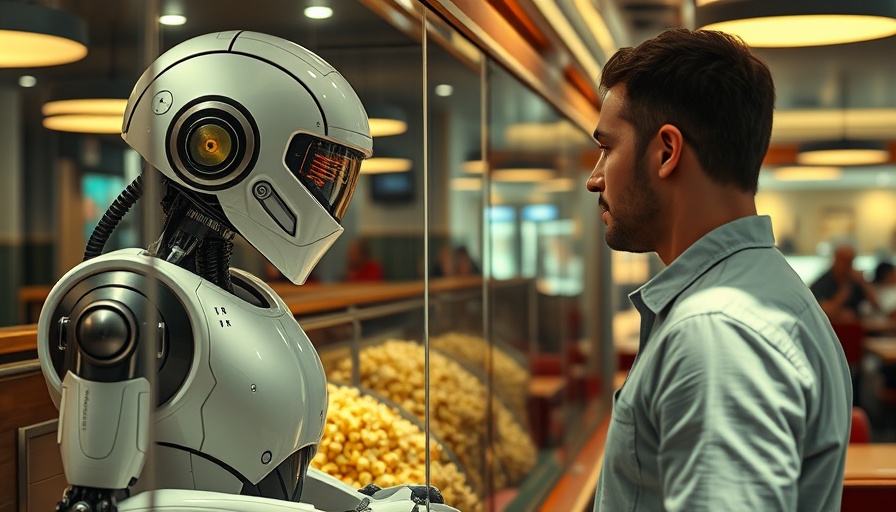
The Rise and Fall of the Tesla Diner: A Cautionary Tale
In the bustling world of entrepreneurship, the spotlight often shines on iconic names like Tesla. However, their latest venture—a diner—appears to falter under pressure. Elon Musk's foray into food service has been met with a series of missteps, drawing scrutiny from industry observers and patrons alike. The Tesla Diner has already faced turbulent challenges shortly after its launch, signaling potential warning signs for small business owners who aspire to innovate yet must navigate the complex interplay of service and customer satisfaction.
Initial Promises and Early Disappointments
The Tesla Diner promised a unique dining experience, combining electric vehicles with an all-day eatery. The vision included an array of mouth-watering menu items, boasting ‘Epic Bacon’ for $12, appealing to both Tesla enthusiasts and food lovers. Within its opening week, however, the Diner faced troubling feedback. Patrons were not only unhappy about the overpriced offerings but were also alarmingly concerned about safety. A viral report surfaced detailing an incident where a woman was injured by a patio cover, showcasing the man-made mismanagement permeating the establishment. Unfavorable comparisons to the automotive side of the Tesla franchise began to arise almost immediately.
Menu Mismanagement: What Happened to the Offerings?
Perhaps the most dramatic shift was seen in the Diner’s menu. Initially stocked with an expansive range of American favorites, the diner has now halved its offerings. Where sandwiches and pastries once thrived, now reside a meager selection of two sides and three sandwiches, igniting frustration among those expecting more from such a prominent brand. The chef, Eric Greenspan, gave vague assurances of a continually evolving menu but failed to address the major shrinkage of items these avid fans once anticipated. This disruption serves as a blunt reminder of the need for forward planning and market adaptation, crucial aspects of running a successful establishment.
Business Lessons From the Tesla Diner
For small business owners, the Tesla Diner’s fall is a rich source of learning. The important takeaway? A great concept needs a solid execution plan. Mismanagement can lead to significant customer backlash, impacting business reputation irreparably. Innovators must be versatile; if your original menu fails to meet consumer desires, adapt quickly. Staying attuned to customer feedback and being transparent about changes can foster loyalty, even in challenging times. Additionally, properly training staff and prioritizing safety can prevent unnecessary incidents that ultimately hurt business.
Promising Innovations and Missed Opportunities
The Diner was supposed to capture the essence of California’s innovative culture—an exciting blend of food and technology. Yet, it quickly became emblematic of Elon Musk's broader business miscalculations. With Tesla's stock already faltering, the additional pressure on the diner to succeed highlights how interconnected these enterprises are. The lesson for small business leaders is clear: ensure your foundation is strong before branching out into uncharted territories. With careful planning and responsiveness, businesses can avoid the pitfalls demonstrated by the Tesla Diner.
Looking Ahead: Rebuilding Trust and Customer Confidence
As news circulates regarding the struggles of the Tesla Diner, the potential for recovery exists, but it will require swift action and a commitment to improving. Future investors and consumers will closely watch any developments. For small business owners, this situation serves as a crucial reminder that initial enthusiasm must be met with strategic foresight. The ability to pivot and ensure customer satisfaction can spell the difference between a business thriving in the limelight and one withering under scrutiny.
Conclusion: The Takeaway
In closing, the Tesla Diner’s rapid descent into controversy could have benefited from a stronger strategy and better customer engagement. The principles of adaptability in menu curation, maintaining safety standards, and directly responding to consumer preferences emerge as valuable teaching tools. As entrepreneurs trek their own paths, they should take heed of the lessons unfolding in this high-profile failure, embracing resilience and responsive business practices to weather the storms of unpredictability.
 Add Row
Add Row  Add
Add 




Write A Comment